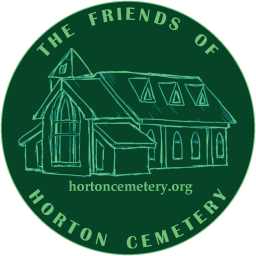b.1880-d.1908
When George Walker died in Ewell Epileptic Colony (St Ebba’s) on the 10th of June 1908, he was just 28 years of age and had spent more than ten years of his life in institutions.
George’s parents
George Walker, was born in 1880, the son of George Walker (born in Bermondsey in 1838) and his wife Margaret (née McCarthy) (born in Bermondsey in 1851).
George’s parents were married at St Leonard’s Church, Shoreditch on the 2nd of October 1880.
In the marriage register, George’s senior is described as a widower and a lighterman (a worker who operated a lighter, a type of flat-bottomed barge). His own father, William, had also been a lighterman.
At the time of their marriage George and Margaret were living at 19, Harman Street in Shoreditch. At the age of 48, George was 18 years older than his new wife. Margaret’s father, John McCarthy, who was born in Cork, worked as a labourer.
Almost twenty years before, in the same church, on the 11th of December, 1859, George had married his first wife, Catherine McCarthy, Margaret’s older sister. Catherine was born in Southwark in 1838. In the 1871 Census we find the couple living in Bermondsey with their two sons, William (born in the 4th quarter of 1861) and Thomas (born in the 4th quarter of 1864).
Sadly, Catherine died in the 4th quarter of 1877 aged just 39.
George’s siblings
It has not been possible to find the Walkers in the 1881 Census. However, in 1891 George senior and Margaret were living at 20, George Row in Bermondsey. George, now aged 59, is described as a ‘licensed waterman (barge)’. Like lightermen, watermen transported people and goods on the river.
Living with George and Margaret are their seven children:
Nelly (born 1874)
Thomas (born 1876)
Mary (born 1877)
George (our subject, born 1880)
William (born 1882)
Alfred (born 1884)
John (born 1888)
Another son, Cornelius, was born in 1892.
Anomalies and unanswered questions in George’s case notes
Although the address given on George’s case notes from the Colony confirms that this is, indeed, the family of our subject, there are a number of questions and anomalies that need to be addressed:
- We must assume that Nelly, Thomas and Mary were born to George senior and his first wife Catherine, However, it has not been possible to confirm their exact dates of birth. Could Catherine have died in childbirth?
- We know that Catherine gave birth to a son called Thomas in 1864. However, in the 1891 Census Thomas’s year of birth is given as 1876. It may be assumed that the first Thomas died but it has not been possible to find a record of his death.
- If we include William and Thomas, the sons from his first marriage, George senior was the father of ten children. This is confirmed by our subject George’s medical notes from the Colony. However, the case notes state that George is the fifth child when he was, in fact, the sixth (and the first of his father’s second marriage). More concerning is the statement that the family consisted of six brothers and four sisters.
- It is possible Catherine and/or Margaret gave birth to daughters who later died and whose births cannot be found in the records, but from the evidence we have at our disposal it would appear that George had four brothers and five half-siblings.
In the 1911 Census, however, we learn that Margaret had given birth to eleven children, six of whom were still living. It has not been possible to ascertain the identity of the sixth child.
- George’s medical notes state “Eldest brother died 22 consumption”. It may be assumed that this was William and that he died in about 1882. As George senior and Margaret named their second son William in 1882 it is likely that this was in memory of his older half-brother who had just died. The medical notes also state that George has two sisters and three brothers who are consumptive (but no names are given). Also there is also a history of tuberculosis in the family.
- George’s case notes from the Colony state that his mother Margaret was ‘insane’. The Lunacy Patients Admission Registers list a number of women called Margaret Walker who were admitted to public and private institutions between 1880 and 1914 (Margaret’s death). Yet, it has not been possible to confirm that our subject’s mother was one of them.
George’s childhood
What little we know of George’s childhood is found in his medical case notes. We learn that he was “backward” in learning to walk and talk and “as a child (was) rather alone and excitable”.
He started having fits at the age of six months, especially at night, though he “did not have fits at home after the age of 10”. Sadly, he also suffered from periodic headaches and underwent treatment at Great Ormond Street Hospital “for some time”.
George received no education after the age of 10 and never worked. His disposition is described as “very excitable”.
Admission to St Ebba’s

From George’s medical notes we learn that he was first admitted to St Ebba’s on the 15th of October 1897.
He was aged 17, having suffered an epileptic ‘attack’.
The doctor who first examined him refers to a “general deficiency of intelligence. Inability to answer many ordinary questions. Confusion of ideas. Difficulty in fixing his attention. Defective memory.”
His mother, Margaret, “said that he could not be trusted on an ordinary errand and that he was subject to paroxysms of dangerous excitement”. The doctor also determined that George was dangerous “by assault”.
It would appear that George was immediately transferred to Banstead Asylum then readmitted to St Ebba’s at the age of 23 on the 27th of August 1903. His disposition on readmission is described as “very excitable”.
In a later examination he is said to be “very simple and imbecilic in manner and conversation”. During his time at St Ebba’s George worked in the scullery, the farm and the villas and, despite taking a combination of medicines including bromide, suffered as many as four epileptic episodes a week. In one two-week period in April 1904 he had fourteen.
George’s mental state
Comments made by doctors in George’s case notes include the following:
“A sharp and at the same time simple-minded and somewhat mischievous imbecile. He courts being taken notice of and is a very good worker but imagines, unreasonably, that any change affecting him, and due to administrative reasons, is a reflection on his ability and conduct. For this reason he becomes perturbed in a high degree.”
“He is suffering from epileptic imbecility. He is definitely childish and has been unable to learn many of the elementary facts of everyday life… He is emotionally unstable and when perturbed over trifles very quickly loses self-control”.
George’s physical deterioration and death
In January 1908 George is described as being “dull and depressed”. In April his health starts to deteriorate – he complains of headaches and has a fever of 102. This continues for several weeks and doctors suspect he has tuberculosis: “Physically much reduced… Has emaciated considerably… Is steadily losing strength… Is getting weaker…”
Finally, on the 10th of June 1908 we read “Sank rather quickly and died at 7.40pm this evening”. George was buried in Horton Cemetery on the 16th of June 1908 in plot 838b.
George’s parents after his death
In the 1901 Census George’s parents are living at 12, Hickman’s Folly in Bermondsey with their sons William, Alfred, John and Cornelius. 70 year-old George is still working as a lighterman.
Sadly, however, at the time of the 1911 Census, George senior was an ‘inmate’ at St Olave’s Union Workhouse in Ladywell Road in Lewisham. He is now 80 years old and described as a ‘former lighterman’. He died in the workhouse in the 1st quarter of 1914 aged 83.Margaret, however, was still living at Hickman’s Folly – though now in just two rooms at number 4 – with John and Cornelius who are both described as labourers. Margaret died in Bermondsey in the 4th quarter of 1914 aged 53.



